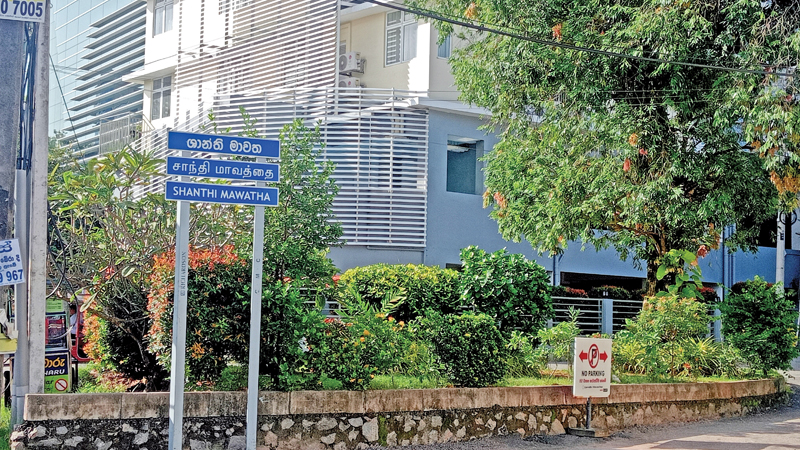Verges, boulevards, parks, and roundabouts—often overlooked as we navigate the city—play a vital role in keeping urban environments clean, safe, and liveable. In the greater metropolitan area of Colombo, the names of boroughs such as Cinnamon Gardens, Wellawatte (Sandy Garden), and Nugegoda (Banyan Shore) bear a testament to a once-verdant landscape. Over a century ago, Colombo’s main roads were flanked by strips of trees, some of which still stand even today, though now overshadowed by the towering skyscrapers that dominate the skyline.

ITPSL President N.A.S.N. Nissanka
As cities evolve and expand, these green spaces face increasing pressure from urbanisation. Yet, in an era marked by climate change and overcrowding, the importance of urban greenery is more critical than ever. How instrumental are trees, sod, and plants in our transforming urban landscape, and what role will they play in the future as we confront these new challenges?
President of the Institute of Town Planners – Sri Lanka (ITPSL) N.A.S.N. Nissanka said that urban planning should prioritise social, economic, physical and environmental needs of the people, which include access to oxygen, recreational spaces, and essential services. Ensuring economic development is crucial to providing these public needs. Nissanka said that urban planning must integrate economic growth targets with social and environmental needs, balancing development with sustainability.
Heat Island effect
He highlighted the environmental value of urban greenery, particularly in reducing the Urban Heat Island (UHI) effect, which can negatively impact public health. He said, “We need to apply some of the modules when making plans. We have to see the cities without heat islands. That effect will impact the good health of the people.”
According to the US Environmental Protection Agency, Heat islands are urbanised areas that experience higher temperatures than outlying areas. Structures such as buildings, roads, and other infrastructure absorb and re-emit the sun’s heat more than natural landscapes such as forests and water bodies. Urban areas, where these structures are highly concentrated and greenery is limited, become “islands” of higher temperatures relative to outlying areas.
There are several ways in which trees help in mitigating the UHI in a city. As tree leaves are usually lighter in colour than the surrounding urban fabric they reflect more light. Trees also affect their local atmosphere by transpiring. Street trees are particularly good at shading buildings and sidewalks, effectively filtering the amount of radiation that reaches the lower surfaces.
Nissanka said, “We need a cooling environment and a pleasant environment that attracts tourists; giving a good reputation to the city.” Green spaces not only enhance the visual appeal but also contribute to economic benefits by accommodating shade that enhances foot traffic.
Civic engagement
When asked how citizens and stakeholders help the authorities maintain urban greenery, he said, “We have changed our process a lot to gain public sector participation. We are approaching the public, the political parties, businesses and tour guides; all these people are contributing.” He said that citizen engagement is crucial for successful urban planning and maintenance of green spaces.
On the importance of private sector involvement, he said, “For that purpose, we can use state funds or local authority funds. We can get the private sector participation because citizens should be aware that it’s their property.” Nissanka highlighted the need for collaborative efforts to ensure the sustainability of urban greenery while emphasising the need for civic responsibility.
However, he acknowledged the challenges in funding and maintaining urban green spaces, saying, “Local authorities should have micro-level management plans. They need money for cleaning, street lighting, salaries and all sorts of things. We also have to consider the income of local authorities.” He emphasised the need for innovative income generation to support these initiatives.
Benchmarks
He said that all cities in Sri Lanka should meet certain standards in development. Rather than focusing on Colombo and trying to make it a “green capital”, Nissanka said that cities should be sustainable and liveable by default. “We have to take the same development to areas such as Jaffna and Trincomalee. Take Japan for example, all cities are on equal footing. We have to think about balance development of the country when we are planning.” He highlighted the necessity of expanding investments and infrastructure development beyond the Western Province.
Nissanka made it clear that greening urban areas is a top priority in planning, both at the national and local levels. The Urban Development Authority (UDA) and other planning bodies are focused on creating and maintaining green spaces, ensuring they are integral to urban development plans. The national physical plan prepared by the National Physical Planning Department (NPPD), identified lots of building zones with greenery. Special attention has been given to local development plans to improve green spaces.
As Sri Lanka’s urban landscapes continue to evolve, the importance of preserving and enhancing green spaces cannot be overstated. Urban greenery not only contributes to the environmental health of our cities by mitigating heat islands and improving air quality, but also enhances the aesthetic appeal and livability of these areas. The integration of greenery into urban planning is essential for sustainable development. Collaborative efforts between the public sector, private stakeholders, and citizens are crucial in maintaining and expanding these vital green spaces, ensuring that our cities remain vibrant, healthy, and resilient for future generations.







